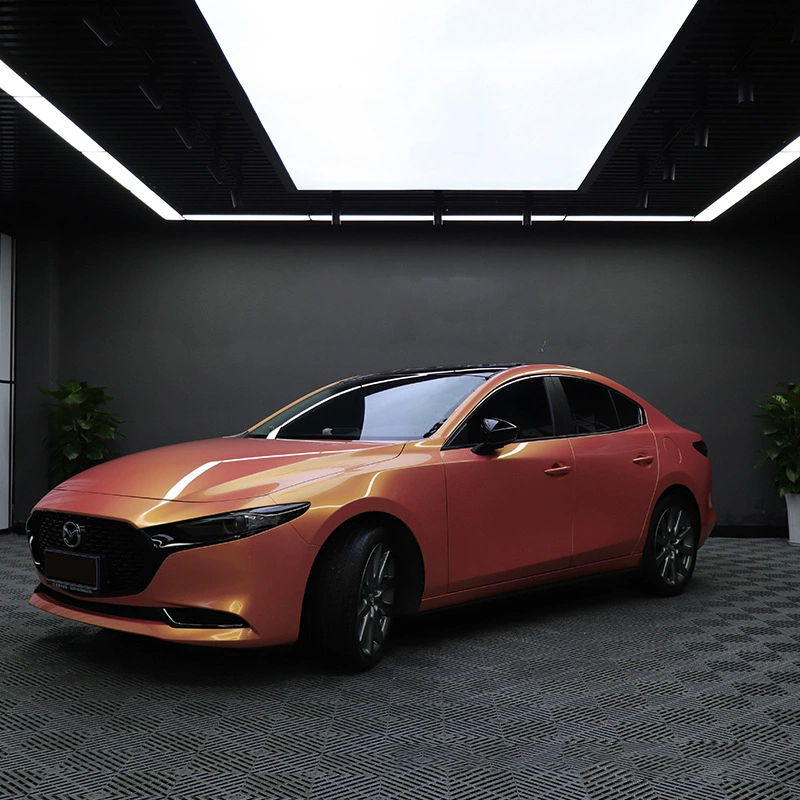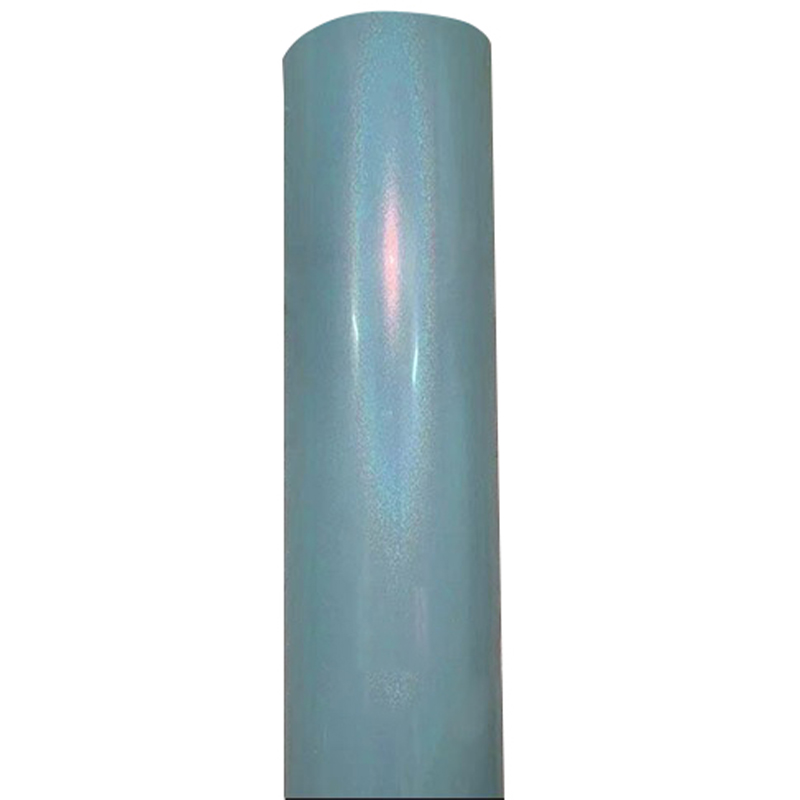The impact of light transmittance control of car stickers on the safety of functional areas such as lights and rearview mirrors
Release Time : 2025-05-20
While the application of car stickers improves the personalization of vehicles, the control of their transmittance is directly related to the safety of key functional areas such as headlights and rearview mirrors. Insufficient or uneven transmittance may lead to lighting failure and blurred vision, which seriously threatens driving safety. Therefore, in-depth exploration of the impact mechanism of car stickers' transmittance on safety functions is of great significance to standardizing the use of stickers and ensuring road safety.
As the core lighting component of vehicles driving at night and in bad weather, the light propagation of headlights is significantly affected by the transmittance of stickers. When the surface of headlights is covered with stickers with low transmittance, the light attenuates a lot during the penetration process. For example, if the sticker transmittance is less than 70%, the effective illumination distance of the low beam may be shortened by more than 30%, resulting in a reduction in the driver's prediction time for the road conditions ahead and an increase in the risk of collision. At the same time, different types of headlights (halogen lamps, LED lamps, laser lamps) have different requirements for light transmittance. Insufficient sticker transmittance will cause light color temperature deviation and light spot deformation, affecting the uniformity of lighting and making it difficult for road signs and obstacles to be clearly presented. In addition, if there is a difference in the local transmittance of the sticker, it will cause light scattering and glare, which will not only interfere with the vision of the driver of the oncoming vehicle, but also may cause visual fatigue to the driver of the vehicle.
The rearview mirror bears the important function of observing the rear view of the vehicle, and the light transmittance of the sticker has a key impact on its image clarity. When the surface of the rearview mirror is covered with a sticker with low light transmittance, the light reflection intensity is weakened, resulting in blurred imaging of the target objects such as the rear vehicles and pedestrians. Experiments show that if the sticker transmittance is lower than 85%, the contrast of the image reflected by the rearview mirror decreases by more than 20%, which can easily cause the driver to miss important traffic information. Moreover, the uneven light transmittance of the sticker will cause mirror reflection distortion, resulting in deviations in the distance and speed judgment of the rear objects, and increase the potential for accidents in operations such as merging and reversing. In addition, the light transmittance of some stickers is further reduced at night or in rainy conditions, and rainwater adheres to the surface of the sticker to form a water film, which aggravates the refraction loss of light and seriously affects the all-weather use safety of the rearview mirror.
The light transmittance of car stickers depends not only on the material itself, but also on its production process, which has an important impact on the uniformity of light transmittance. Some cheap stickers use ordinary printing technology, and the uneven distribution of ink leads to obvious differences in local light transmittance, forming a visual blind spot. High-quality stickers use precision coating technology to control the film thickness error within ±0.01mm to ensure uniform light transmittance. At the same time, the thickness and viscosity of the sticker's adhesive layer will also affect the light transmittance performance. An overly thick or unevenly sticky adhesive layer can easily cause the sticker to not fit tightly with the surface of the headlights and rearview mirrors, resulting in bubbles or wrinkles, causing diffuse reflection of light. In addition, if the additional processes such as anti-scratch coating and hydrophobic treatment on the surface of the sticker are not handled properly, it will increase the loss of light and further reduce the light transmittance performance.
To ensure driving safety, countries have set strict standards for the light transmittance of functional areas such as headlights and rearview mirrors. For example, the EU ECE regulations stipulate that the light transmittance of the headlight surface material shall not be less than 80%, and the light transmittance of the rearview mirror area material shall be higher than 85% to ensure basic safety performance. However, some car stickers on the market lack clear light transmittance markings, or the actual light transmittance performance does not match the publicity, which poses a major safety hazard. Therefore, it is crucial to establish a unified transmittance testing standard and certification system. Through professional equipment such as haze meter and transmittance tester, the full spectrum transmittance performance of stickers is tested to ensure that they meet safety requirements.
In actual use, the lack of awareness of car stickers transmittance by car owners is also one of the safety risks. Many car owners blindly pursue the personalized effect of stickers and ignore the impact of transmittance on safety functions. Therefore, it is particularly important to strengthen traffic safety publicity and education, popularize knowledge about sticker transmittance, and guide car owners to correctly choose and use sticker products. At the same time, the automotive decoration industry should establish standardized sales guidelines, requiring merchants to clearly mark the transmittance parameters of stickers and provide installation guidance to avoid safety hazards caused by improper use.
In order to balance the needs of beauty and safety, the transmittance control technology of car stickers is constantly innovating. The new optical-grade sticker material uses nano-coating technology to increase the transmittance to more than 90% while ensuring the printing of personalized patterns, and has excellent anti-ultraviolet and anti-aging properties. In addition, the research and development of smart dimming stickers is also advancing. Through electrochromic or photochromic technology, the light transmittance of stickers can be automatically adjusted according to the ambient light, enhancing light transmittance at night or in bad weather to ensure clear lighting and vision.
The light transmittance of car stickers is closely related to the safety of functional areas such as headlights and rearview mirrors. In the future, with the development of material science and manufacturing technology, new stickers with controllable light transmittance will become mainstream. At the same time, it is necessary to further improve regulations and standards, strengthen market supervision and safety education, and ensure that car stickers can meet personalized needs while effectively ensuring road traffic safety.







